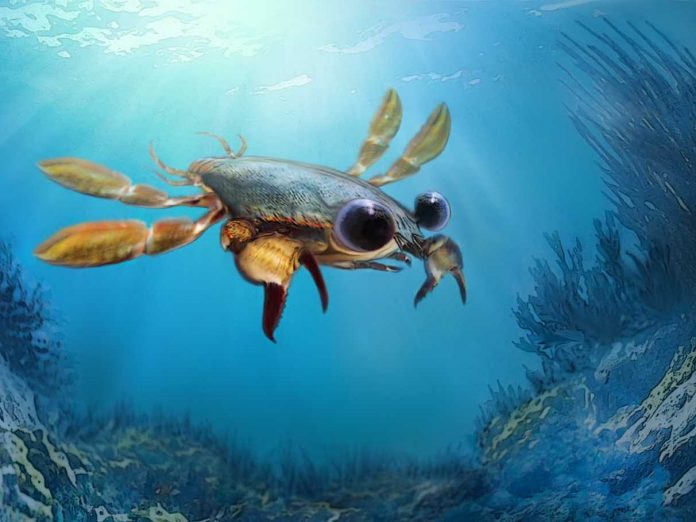With enormous eyes, large claws, paddle-shaped legs and lobster-like shells, scientists have described a newly discovered species as “the strangest crab that has ever lived”.
Fossils found in Colombia have revealed the new evolutionary branch of swimming crabs, which lived around 95 million years ago.
The small creatures reportedly reminded palaeontologists of chimeras – monsters from Greek mythology with a lion’s head, goat’s body, and snake’s tail – due to their mixed features which closely resemble those of other marine arthropods.
Named Callichimaera perplexa, which means “perplexing beautiful chimera”, after its unusual mash-up of features, it is the earliest example of a swimming arthropod with paddle-like legs since the extinction of sea scorpions more than 250 million years ago.
It was discovered by an international team of researchers led by palaeontologist Javier Luque from America’s prestigious Yale University.
“Callichimaera perplexa is so unique and strange that it can be considered the platypus of the crab world,” Dr Luque said. “It hints at how novel forms evolve and become so disparate through time.”
He added: “Usually we think of crabs as big animals with broad carapaces, strong claws, small eyes in long eyestalks, and a small tail tucked under the body. Well, Callichimaera defies all of these ‘crabby’ features and forces a re-think of our definition of what makes a crab a crab.”
The fossilised creatures, recovered from the Andes Mountains in Colombia, once lived in a shallow coastal sea during the Cretaceous period.
Researchers recovered over 70 of the specimens in soft clay, together with hundreds of other crustaceans like shrimps and lobsters.
The unique Callichimaera perplexa crab had fin-like legs allowing it to swim, and large eyes, believed to enable it to hunt at night (Oksana Vernygora, University of Alberta)
While the fossils are no bigger than a coin, Dr Luque explained their exceptional degree of preservation allowed researchers to pick out fine details including their paddle-like legs and large eyes, suggesting the crabs spent their lives swimming, rather than crawling as most modern crabs do today.
Dr Luque said Callichimaera’s “unusual and cute” appearance, including its small size, large compound eyes with no sockets, bent claws, leg-like mouth parts, exposed tail, and long body are features typical of pelagic crab larvae.
He said this suggests several of the larval traits seen in the species might have been retained and amplified in miniaturised adults via changes in the timing and rates of development.
This process is called “heterochrony,” and is believed to lead to the evolution of novel body parts.
“It is very exciting that today we keep finding completely new branches in the tree of life from a distant past, especially from regions like the tropics, which despite being hotspots of diversity today, are places we know the least about in terms of their past diversity,” Dr Luque said. “It’s an incredible amount of detail, and we’ve been able to reconstruct them like they were living yesterday.”
The high quality of the fossils has even allowed researchers to create a detailed 3D model of the crab.
“It’s common to find novel body forms in older rocks, for instance from the Paleozoic when life was exploding into many new forms,” said Dr Luque. “This discovery, from the mid-Cretaceous, illustrates that there are still surprising discoveries of more recent, weird organisms waiting to be found, especially in the tropics. It makes you wonder ‘what else is out there for us to discover?’”
The study appears in the journal Science Advances.








